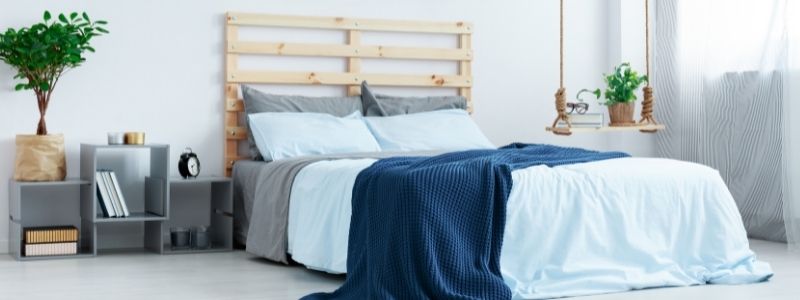Loved by generations, the waterbed mattress is starting to lose the popularity battle. Why has it been so popular for so long and why are visco foam beds winning ground against them? First of all, let’s look at the way both types of mattresses work. But first, here’s what you must know about home mattress trials and what makes a good water bed mattress.
How Do Memory And Waterbed Mattresses Work?
Contents
Visco Elastic Foam Bed Essentials
Memory foam is made of open cells, billions of balloons with holes in them. When you sit on it, air moves from one cell to another and the foam bed contours your body in a unique fashion, relieving pressure points and supporting your weight.
When you lie on a visco foam bed there is no air in the cells to push back and cause discomfort. The air is spread to adjoining cells and the foam simply ‘melts’ under you to provide long-term, balanced support and comfort.
Waterbed Mattress Essentials
- Water beds work differently. The original (now outdated) water mattress consisted of a water-filled vinyl bladder and a safety liner (placed around the water bladder to prevent leakage), both placed on a wooden base with a plinth and weight distributor.
- Edge support is given by a hard wooden frame surrounding the water bladder. In today’s terms, this type of waterbed is called ‘hard-sided’. The more sophisticate version is the ‘soft-sided’, which has foam edges all over the bladder. This not only makes it more comfortable to sit on but also ensures that the mattress can be placed directly on the floor, without the need for an outer frame.
- The latest advancements in waterbed technologies gave birth to the tube water mattress, which is made of a thick foam base and a water-filled-tubes layer placed on top. You can adjust the firmness of each tube to suit your sleeping position and preferences. Your sleeping partner can do the same on their side of the bed, without disturbing you.
- Other modern models combine water and foam layers in order to reduce waves in the mattress and to offer additional support. For example, you can find waterbeds that are 95% waveless. Some of them also come with a 2-5″ memory foam toppers on top for added comfort.
- Modern water mattresses have built-in heating systems: a low wattage pad placed underneath the liner and a variable thermostat that ensures that the water always maintains your desired temperature.
- The bed is filled through a hose connected to any of your bathroom faucets and has to be emptied only when it must be moved.
- Maintenance-wise, a special conditioner has to be added to the water regularly to prevent algae and bacteria growth inside the bladder.
References
- Frequently Asked Questions About Waterbeds – Answers to common questions about water beds.
- Waterbed FAQ – A further 50 FAQs on waterbed pros, cons, how to use them and how they work.
- Waterbed Health
Customer Opinions
I had a waterbed in the early to mid-80’s, after hearing that they might be good for my back and legs (pain and spasticity). As it turns out, a waterbed was the worst thing for me. I have a pronounced curve (scoliosis), which is related to cerebral palsy and abnormal posturing. That space in my back essentially had no place to rest, and I always woke up stiff and sore.
groups.google.com/group/alt.med.fibromyalgia
With the waterbed mattress, I had almost constant back pain and arm / hand numbness that would wake me many times a night.
www.epinions.com/content_167969525380
The other big issue: it’s almost impossible to sit upright on the bed for any length of time. I do a lot of work sitting cross-legged on my bed, because that happens to be how & where I am most comfortable, and with the Tempurpedic I just kept sliding down, down, down. Like I imagine being in quicksand would be.
www.epinions.com/content_135358877316
I have chronic low back pain that is muscular. I moved and tried a waterbed which just KILLED my back, as does any soft mattress I have tried at friends.
www.whatsthebest-mattress.com/cgi-bin/yabb/YaBB.pl?action=search2

